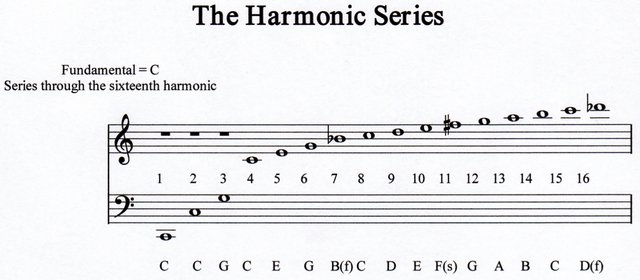What is ‘Timbre’? Also, Partials, Fundamentals, and Overtones
I hate correcting people, but to avoid sounding uneducated at the cocktail party, it should be noted that the ‘i’ in timbre is not pronounced like the word timber but like the ‘a’ in pantry.
This is one of my absolute favorite topics in music and probably the most important for anyone who wants to write and arrange music. And for those who just enjoy listening, this will help you enjoy it even more!

Excerpt taken from Musimathics: The Mathematical Foundations of Music:
“In musical scores, timbre means the type of instrument to be played, such as a violin, trumpet, or bassoon. But timbre also is used in a general sense to describe an instrument’s sound quality as sharp, dull, shrill, and so forth.”
“How quickly an instrument speaks after the performer starts a note, whether it can be played with vibrato, and many other instrumental qualities are also lumped together as timbre. Timbre also gets mixed up with loudness because some instruments, like the trombone, get more shrill as they get louder. As a consequence, it’s easier to say what timbre isn’t than what it is: timbre is everything about a tone that is not its pitch, not its duration, and not its loudness. However, negative definitions are slippery and provide no new information.”
“There are other ways of representing tones that shed positive light on timbre. Just as colors can be shown to consist of mixtures of light at various frequencies and strengths, sounds can be shown to consist of mixtures of sinusoids at various frequencies and strengths. For instance, when we hear a note played on a trumpet, even though our ears tell us we are hearing a single tone, in fact we are hearing simpler tones mixed together in a characteristic way that our minds–perhaps through long experience, perhaps through some intrinsic capability–fuse into the perception of a trumpet sound.”
“The individual sinusoids that collectively make up an instrumental tone are called its partials because each carries a partial characterization of the whole sound. Partials are also known as components. The principal properties of the partials are their frequencies and amplitudes. The way the partials manifest in frequency, amplitude, and time is what our ears use to determine what kind of instrument made a particular sound.”

“The lowest pitched partial in a tone is called the fundamental. It is generally what our ears pick out as the pitch of the tone. Since, by definition, the remaining partials in the tone are pitched higher, they are called overtones. Our ears use the pattern of overtone frequencies as an important cue to recognize timbres. The overtone frequencies of wind and string instruments are positive integer multiples of the fundamental, where the positive integers are 1, 2, 3, and so on. For instance, if a flute or violin has fundamental frequency f, then the frequencies of its overtones will be positive integer multiples of f. The partials of such instruments are called harmonics. Note that because the positive numbers start at 1, and because 1 X f = f, therefore the first harmonic is the same as the fundamental.”
“Instruments with harmonic partials are usually chosen to carry the melody and harmony of the music because frequencies of the harmonics tend to agree in frequency with the pitches of the diatonic scale. Instruments with inharmonic partials such as drums and bells are usually not used to carry melody and harmony because for the most part the frequencies of their partials do not agree with the diatonic scale.”
“The amplitudes and frequencies of the partials of musical instruments tend to vary in a characteristic way over the duration of a tone, depending upon the instrument and performance style of the performer. Though the variation may be slight, the precise amplitude and frequency ballistics of the partials help our ears to fuse a single percept of an instrument out of its individual partials, and help identify the type of instrument.”
Excerpt taken from Musimathics: The Mathematical Foundations of Music:
A piece of music that is often used to illustrate the use of many different timbres within one musical composition is Bolero, by Maurice Ravel. It is a very popular and well known orchestral work that is basic in construction and shows how a composer can use timbre to get a lot of mileage out of just a couple melodies.
That’s kind of of down playing the creativity of Ravel, but you get the idea!
Here is a version. I specifically chose a recording without video, because the point is to hear the differences in timbre as the melody cycles through all the different instruments.
Oh ok! Here’s a video recording for you:
For more info, see our Resources page
Original post at http://thesecretsofmusic.com